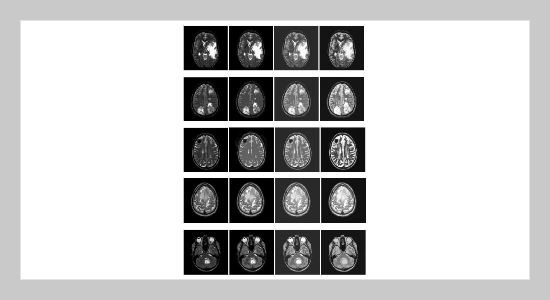REFERENCES
- [1]Shoulin Yin, Ye Zhang, Shahid Karim. “Large Scale Remote Sensing Image Segmentation Based on Fuzzy Region Competition and Gaussian Mixture Model”. IEEE Access. 6, pp: 26069-26080. (2018). doi: 1109/ACCESS.2018.2834960
- [2]Shoulin Yin, Jie Liu, Hang Li. “A Self-Supervised Learning Method for Shadow Detection in Remote Sensing Imagery”. 3D Research, 9(4) (2018). doi: 10.1007/s13319-018-0204-9
- [3]Huang G, Ji H, Zhang W, et al. “Adaptive multilayer level set method for segmenting images with intensity inhomogeneity”. IET Image Processing, 13(10), pp. 1714-1724, (2019). doi: 10.1049/iet-ipr.2019.0315
- [4]Doshi T, Caterina G D, Soraghan J, et al. “Combining interpolation and 3D level set method (I+3DLSM) for medical image segmentation”. Electronics Letters, 52(8), pp. 592-594, (2016). doi:
- [5]Shoulin Yin, Ye Zhang and Shahid Karim. “Region search based on hybrid convolutional neural network in optical remote sensing images”, International Journal of Distributed Sensor Networks, 15(5), (2019). doi: 10.1177/1550147719852036
- [6]Teng Lin, Hang Li and Shoulin Yin. “Modified Pyramid Dual Tree Direction Filter-based Image De-noising via Curvature Scale and Non-local mean multi-Grade remnant multi-Grade Remnant Filter”, International Journal of Communication Systems. 31(16), (2018). doi: 10.1002/dac.3486
- [7]Osher S. “Fronts propagating with curvature-dependent speed: Algorithms based on Hamilton-Jacobi formulations”. Journal of Computational Physics, 79(1), pp.12-49, (1988). doi:10.1016/0021-9991(88)90002-2
- [8]F. Chan and L. A. Vese. "Active contours without edges." IEEE Transactions on Image Processing, 10(2), pp. 266-277, (2001). doi: 10.1109/83.902291.
- [9]Li, C. Kao, J. C. Gore and Z. Ding. "Minimization of Region-Scalable Fitting Energy for Image Segmentation." IEEE Transactions on Image Processing, 17(10), pp. 1940-1949, (2008). doi: 10.1109/TIP.2008.2002304.
- [10]Ding K, Xiao L, Weng G. “Active contours driven by region-scalable fitting and optimized Laplacian of Gaussian energy for image segmentation”. Signal Processing, 134(may), pp.224-233, (2017). doi: 10.1016/j.sigpro.2016.12.021
- [11]Wang L, Chang Y, Wang H, et al. “An active contour model based on local fitted images for image segmentation”. Information sciences, 418, pp.61-73, (2017). doi: 10.1016/j.ins.2017.06.042
- [12]Zhang and J. Song. "An Adaptive Fuzzy Level Set Model With Local Spatial Information for Medical Image Segmentation and Bias Correction." IEEE Access, 7, pp. 27322-27338, (2019). doi: 10.1109/ACCESS.2019.2900089
- [13]Nileshsingh V. Thakur, V. R. Parihar. “Graph Theory based Approach for Image Segmentation using Wavelet Transform”. International Journal of Image Processing, 8(5), pp. 255-277, (2014). doi: no
- [14]Dai S, Lu K, Dong J, et al. “A novel approach of lung segmentation on chest CT images using graph cuts”. Neurocomputing, 168(nov.30), pp.799-807, (2015). doi: 10.1016/j.neucom.2015.05.044
- [15]Shoulin Yin, Jie Liu, Ye Zhang, Lin Teng. “Cuckoo search algorithm based on mobile cloud model”. International Journal of Innovative Computing, Information and Contro 12, pp.1809-1819. (2016). doi: 10.24507/ijicic.12.06.1809
- [16]Shoulin Yin, Hang Li, Lin Teng. “Semantics automatic annotation in medical image based on deep learning”. Basic & Clinical Pharmacology & Toxicology. Dec 2018.
- [17]Yang Sun, Shoulin Yin,Hang Li, Lin Teng, Shahid Karim. “GPOGC: Gaussian Pigeon-Oriented Graph Clustering Algorithm for Social Networks Cluster”. IEEE Access. 7, pp. 99254 - 99262, (2019). doi: 10.1109/ACCESS.2019.2926816
- [18]Wu J, Song S, An W, et al. “Defect Detection and Localization of Nonlinear System Based on Particle Filter with an Adaptive Parametric Model”. Mathematical Problems in Engineering, pp. 1-12, (2015). doi:10.1155/2015/759035
- [19]Nabizadeh N, John N. “Brain MRI Tumor Detection using Active Contour Model and Local Image Fitting Energy”, APS March Meeting 2014. American Physical Society, 2014.
- [20]Jiang X L, Li B L, Yuan J Y, et al. “Active Contour Driven by Local Gaussian Distribution Fitting and Local Signed Difference Based on Local Entropy”. International Journal of Pattern Recognition and Artificial Intelligence, 30(3), (2016). doi: 10.1142/S0218001416550119
- [21]Han B, Wu Y, Basu A. “An adaptive active contour model driven by weighted local and global image fitting constraints for image segmentation”. Signal Image and Video Processing, 14(2), pp. 1-8, (2020). doi:10.1007/s11760-019-01513-5
- [22]Lin Teng, Hang Li, Shoulin Yin, Yang Sun. “Improved krill group-based region growing algorithm for image segmentation”. International Journal of Image and Data Fusion. 10(4), pp. 327-341, (2019). doi: 10.1080/19479832.2019.1604574
- [23]Fu L H, Guo L, Wu W D. “Salient Region Detection based on Frequency-tuning and Region Contrast”, International Conference on Computer Science & Service System. pp. 732-735, (2014). doi:10.2991/csss-14.2014.171
- [24]Sungmin, Lee, Seokmin, et al. “A review on dark channel prior based image dehazing algorithms”. Eurasip Journal on Image & Video Processing, (2016). doi:10.1186/s13640-016-0104-y
- [25]Shoulin Yin, Jing Bi. “Medical Image Annotation Based on Deep Transfer Learning”. Journal of Applied Science and Engineering. Vol. 22, No. 2, pp. 385-390, 2019. doi:10.6180/jase.201906_22(2).0020
- [26]Lin Teng, Hang Li and Shahid Karim. “DMCNN: A Deep Multiscale Convolutional Neural Network Model for Medical Image Segmentation”. Journal of Healthcare Engineering, (2019). doi: 10.1155/2019/8597606
- [27]Lin Teng, Hang Li, Shoulin Yin, Shahid Karim &Yang Sun. “An active contour model based on hybrid energy and fisher criterion for image segmentation”. International Journal of Image and Data Fusion. 11(1), pp. 97-112. (2020). doi: 10.1080/19479832.2019.1649309
- [28]Nie D, Shen D. “Adversarial Confidence Learning for Medical Image Segmentation and Synthesis”. International Journal of Computer Vision, 1-20, (2020). doi: 10.1007/s11263-020-01321-2









